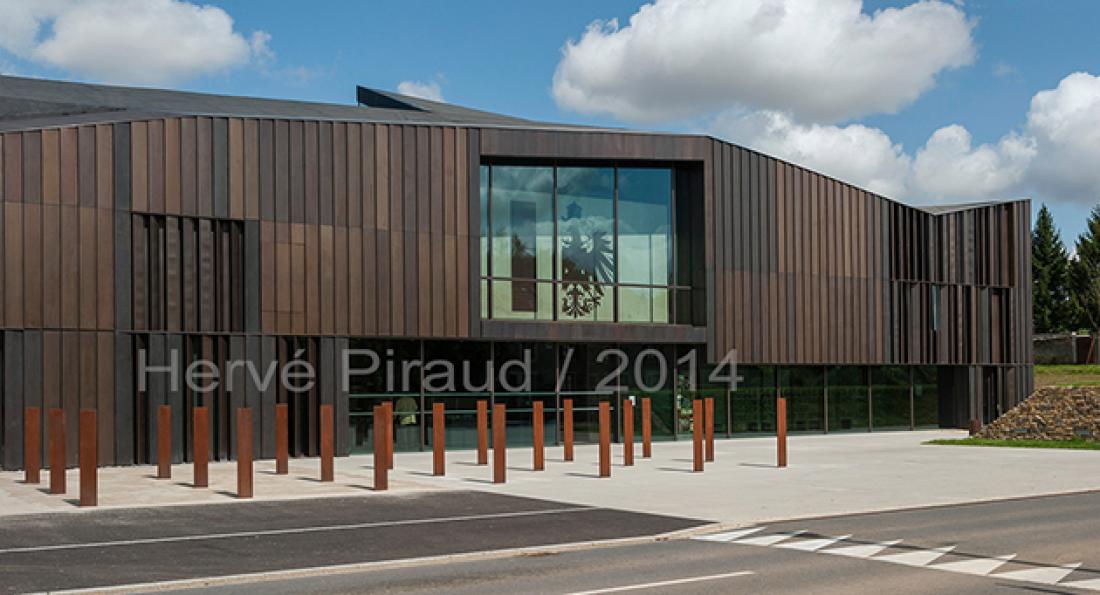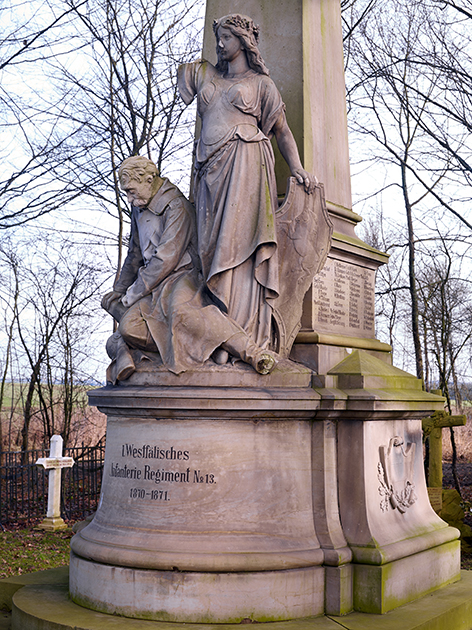Commemorating the Franco-Prussian War: the challenge of preserving remains

While France has seen special commemorative cycles to mark the anniversaries of the two world wars, in 2020 it is preparing to revive the memory of a conflict that remains little-known, not to say forgotten, by most people, even though it has never ceased to be commemorated. Felt to be a psychological necessity in the wake of the war, over time its commemoration has come to be a historical necessity.
The Franco-Prussian War, known in France as the “Guerre de 1870”, has for decades been described by historians as the “mother of all the wars of the 20th century”. Yet the distance that separates us from it means it gets pushed into the background, to the sidelines of history. In so doing, we forget that it was the first contemporary conflict, due to the development of the techniques used in it. This war declared by an Empire against a Kingdom, and concluded between a Republic and a Reich, had consequences that can still be seen in our daily lives, particularly in the “lost provinces” of Moselle and Alsace.
Commemorative practices in France and across the Rhine
A truly traumatic experience for the French and a crushing victory for the Germans, with the war’s end came the need, on both sides, for the first time, to construct the remembrance of the battles and the fallen.
Thus, in the months that followed the signing of the Treaty of Frankfurt, on 10 May 1871, bringing an end to the war, people made their own individual visits to the key sites of the conflict to remember and commemorate.
Immediately after the war, French and Germans developed the basis of remembrance. This came about due to the significant mobilisation of troops (France: 1 600 000 / Germany: 1 400 000) as well as the high number of soldiers killed in the few months of the conflict (139 000 French / 51 000 Germans). These figures are indicative of the degree to which families in both countries would have been affected by this military engagement.
The emphasis of each country may have been different, but the approach taken was identical: erection of memorials, creation of commemorative days, opening of museums devoted to the conflict (Gravelotte, Mars-la-Tour, Loigny-la-Bataille), pilgrimages to the battlefields, founding of patriotic organisations (Le Souvenir Français in 1887, for instance), construction of military cemeteries.
In Germany, the focus was on commemorating the victory, on 4 September – “Sedantag” – and the heroes who made it possible. In France, the key concern was to remember the main battles in which the armies fought heroically, risking their lives and putting up stiff resistance, as evidenced by the famous Lion of Belfort.
The whole thing was staged by the French and German States. The Third Republic nurtured a spirit of revenge, on the premise that, born of a defeat, it must lead the nation to victory. The young Reich, meanwhile, swelled with satisfaction at its victory and the unity of a nation it had succeeded in creating, in particular through the annexation of the Reichsland of Alsace-Lorraine.

Franco-Prussian War memorial in the commune of Coincy. © Département de la Moselle
Honouring the soldiers, valuing the sites
Many ceremonies thus continued to take place, until the summer of 1914, at memorials erected in town and country, across France and the annexed territories. It is worth noting that French memorials were built in the latter, despite their being under German rule. In 1907, Le Souvenir Français was authorised to set up a section in Metz and, in 1908, it obtained permission to build a memorial in Noisseville, then a second the following year in Wissembourg. In this way, it preserved pro-French feeling in the Reichsland, as well as giving families a place for contemplation.
But the Franco-Prussian War was not just remembered around war memorials. The award of special honours, especially medals, was another means of remembering. These came into existence very early on in Germany, with official medals being awarded to veterans immediately after the conflict was over. In France, medals were produced to begin with by organisations of veterans and war victims. It was not until 1911 that the French government authorised the creation of a bronze medal with a green ribbon with black stripes symbolising both the hope of the return of Alsace and Moselle, and France in mourning.
It should be pointed out that the early commemorations and their tools were devised with partisan desires in mind, carrying on the tradition of opposition between the two countries. This impassioned standpoint is understandable in the sense that it was formed in the aftermath of the conflict. At a remove, remembrance of the Franco-Prussian War tends to assume another purpose. Today, remembering the war may seem abstruse. Those who fought in it are long dead, the political regimes responsible for it are also long gone (France is no longer under the Third Republic but the Fifth), and the complex history of the 20th century has distanced us still further from 1870.
Celebrating Franco-German reconciliation
In addition, with the passing of time, the spirit of revenge seen in the years following the conflict has been succeeded by the idea of taking a fresh look at this part of our history. That was the idea behind the new Musée de la Guerre de 1870, in Gravelotte. With as its constituent collections those of the former museums of Gravelotte and Mars-la-Tour, the museum’s scientific committee was intent on giving an objective presentation of the Franco-Prussian War and thereby shedding new light on it. The same was true of the museum of Loigny-la-Bataille, founded in 2017.
For several years, then, there has been a growing revival of interest in this conflict, to the point where, presented as the source of the two world wars that followed, it feels closer to us, as well as being a source element whose repercussions would extend to the Schuman Declaration of 1950, which laid the foundations of contemporary Europe.
This vision of history has been applied for a number of years at commemorations of the Battle of Spicheren, where veterans and the public in attendance no longer remember the war, but instead Act 1 of what would culminate, nearly a century later, in Franco-German friendship.
The Franco-Prussian War also left a profound mark on the territories of the East, in particular the region around Metz. The fierceness of the fighting and the staggering human losses (75 000 dead and missing in just four summer days) gave rise to a large number of remembrance sites across the region.
The fighting left an indelible mark on the area, serving as a permanent reminder that here was where the fate of the following century was decided.
75 years of wars / 75 years of peace: that is what the 150th anniversary of the Franco-Prussian War commemorates this year. The impulses of the past are succeeded by a genuine desire to celebrate today the friendship between enemies of yesterday.
Commemorating 1870 is therefore essential to a better understanding of the foundations of our society. Preserving its traces is more than necessary; it helps us give material expression to this brief yet pivotal moment in history.
Thus, in a different context from that of 1871, and with the benefit of hindsight, we can turn the Gambetta quote on its head and say: “Remember always, and speak of it also.”

